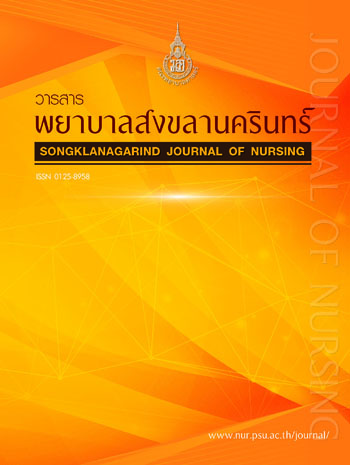The Relationship Between Anthropometric Indices and Hypertension in Thai Adolescents
Main Article Content
Abstract
This cross-sectional study aimed to investigate the relationship between anthropometric data and
hypertension in adolescents. Samples of 611 junior high school students were recruited using stratified-random
sampling from four public high schools in Hat Yai City, Songkhla Province. Demographic questionnaire,
automated blood pressure monitor, digital weighing scale, telescopic height rod, and a non-stretch tape were
used for data collection. Automated blood pressure monitor and digital weighing scale were calibrated by the
manufacturer. Results indicated that prevalence of hypertension was 12.8%. Moreover, 17.5% was overweight
and 7.0% was obese. Considering waist circumference, results showed that the prevalence of overweight and
obesity was 5.4% and 26.2% respectively. The study also showed that 18.2% of sampling group had waist
circumference and height ratio more than 0.50. The results of logistic regression analysis revealed that body
mass index (BMI) and waist circumference were significantly and positively correlated with hypertension (OR
= 2.44; 95% CI = 1.05-5.67; p < .05 and OR = 2.58; 95% CI = 1.21-1.55; p < .05, respectively).
This study confirms that BMI and waist circumference were related with hypertension. Promoting
awareness of regular anthropometric measurement to both adolescent and personnel working in this area
should be concerned as done in adult group. Apart from body weight and height, waist circumference
should be added as health assessment routine for the high school students. Information of how to compare
anthropometric with normal range should be provided to both students and teacher for it can help them to
assess the risk for hypertension. Risk group should be monitored blood pressure for a regular basis to detect
hypertension. Advice and care for appropriate health behaviors should be further given to the risk group.


